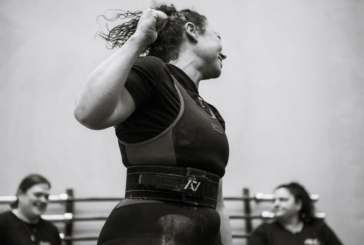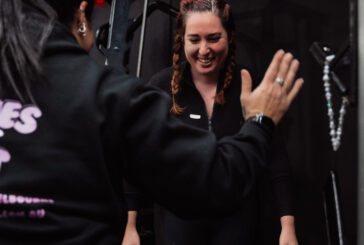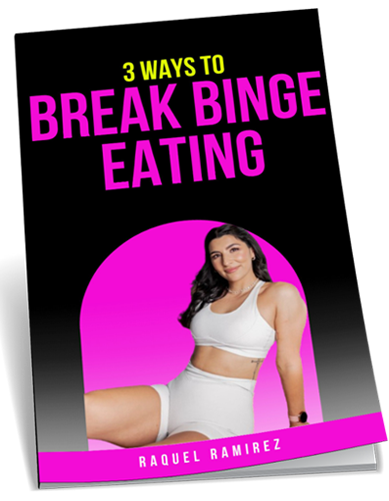So, you’ve been training hard, hitting personal bests, and now you’re ready to step onto the platform. First off congratulations! Committing to a powerlifting competition takes guts, discipline, and confidence. Whether you’re looking to push your limits, meet other strong women, or just experience the thrill of competition, preparing for your first meet can feel both exciting and overwhelming.
If you’re asking yourself how to prepare for a powerlifting competition, you’re not alone. This guide is a complete, beginner-friendly checklist tailored specifically for women. It covers everything from your training plan and nutrition to your equipment and mindset, ensuring you’re fully prepared to dominate meet day.
Joining a female-centric training environment can significantly enhance your preparation. If you’re looking for expert coaching and guidance tailored to women, Ladies That Lifts personal training programs are a fantastic place to start your journey.
Understand the Meet Structure
Before anything else, it’s essential to understand how a powerlifting meet works. Powerlifting competitions consist of three lifts, performed in this order: the squat, the bench press, and the deadlift. Each athlete gets three attempts per lift, with the best of each counted toward the lifter’s final score or “total.”
Lifts are judged on specific form requirements: depth for squats, a pause for bench press, and full lockout for deadlifts. Different federations may have slight variations, so it’s always smart to review the specific rulebook of the organization you’re competing under.
Build a Powerlifting Training Plan
A proper powerlifting training plan is critical when prepping for a meet. Most women begin with a 10–12 week cycle leading up to competition day. In the early weeks, your focus should be on building volume, refining form, and strengthening accessory muscles to support the three big lifts. Around week six, you’ll begin increasing intensity and tapering volume to peak your performance. By the final two weeks, your program should include low-volume, high-intensity sessions that help your central nervous system recover while maintaining strength.
Most importantly, your plan should include regular practice of competition-style lifts—complete with commands and pauses—so that you’re fully prepared for the meet environment. If you’re unsure how to structure a cycle, work with a coach who understands meet prep for female powerlifting.
Prioritize Mental Preparation
One of the most overlooked elements in competition prep is your mental game. The noise, pressure, and adrenaline can be overwhelming—especially if it’s your first meet. Begin building mental resilience weeks in advance. Visualization is a powerful tool: mentally rehearse each lift, from stepping on the platform to hearing the command and nailing the lockout. Practicing with “mock meets” in your gym can also help replicate competition anxiety in a safe space.
Develop routines that calm your nerves and center your focus, like breathing techniques or listening to a playlist during warm-ups. Remind yourself that your job isn’t to impress others—it’s to perform for you. Cultivating confidence is just as essential as cultivating strength.
Fine-Tune Your Powerlifting Nutrition
Dialing in powerlifting nutrition is essential—not just for energy on the day but for consistent performance throughout prep. If you’re planning to compete in a specific weight class, ensure that any weight cut is done gradually and safely, ideally under guidance. Avoid extreme dieting or dehydration, as both can harm performance and well-being.
Leading up to the meet, emphasize whole, nutrient-dense foods that support recovery and fuel training. Prioritize protein for muscle repair, carbohydrates for energy, and fats for hormone regulation. Practice your competition-day meals during training sessions to make sure your body handles them well. Hydration is key—especially the day before and morning of the meet.
To read more real-world nutrition and training tips, the Ladies That Lift blog is filled with advice tailored specifically for women in strength sports.
Prep Your Equipment in Advance
Meet day requires specific, competition-approved gear. Creating an equipment checklist ahead of time can prevent last-minute stress. You’ll need a singlet (mandatory), flat-soled or lifting shoes, a plain t-shirt (with sleeves, no logos depending on the federation), knee-high socks for deadlifting, and optionally, wrist wraps and knee sleeves for support. A lifting belt is highly recommended, but it must meet legal specs in width and thickness.
Begin using your meet gear several weeks before the competition to get comfortable lifting in it. Nothing should feel new on the platform. Pack everything in a designated gym bag a few days ahead and double-check against your federation’s guidelines. Don’t forget essentials like chalk, resistance bands for warm-up, ID for weigh-ins, and snacks.
Focus on the Final Week
The last 7–10 days before your meet are crucial for recovery and final preparation. This period, called the taper, allows your body to rest and your nervous system to peak. Training volume should drop significantly while maintaining some heavy singles or doubles early in the week. Focus on quality sleep (aim for 7–9 hours), increase mobility and stretching, and avoid any new or risky activities.
Double-check your weigh-in schedule and logistics for meet day. Prepare meals, print your attempts if required, and organize transportation early. Use this week to mentally rehearse your lifts, visualize success, and enter the weekend with calm confidence.
If you’re curious about the women behind the brand and their mission, explore the Ladies That Lift about page for inspiring stories and the philosophy that drives their community.
Final Powerlifting Meet Checklist for Women
You’ve trained hard, recovered smart, and planned your nutrition—but meet day comes down to execution. To ensure you’re fully ready, use this comprehensive checklist.
In terms of training and mindset, you should have completed a structured powerlifting cycle that includes technique work, accessory exercises, and mock meet simulations. Practicing commands in your regular training sessions builds familiarity and confidence. Mentally, you should be prepared with strategies to manage nerves, focus on your routine, and block out distractions.
Your nutrition should already be dialed in. This includes staying within or close to your weight class without extreme dieting, staying hydrated, and planning easy-to-digest, carb-rich snacks for the day. Familiarity with what to eat before each lift, as well as between attempts, will help maintain energy and focus.
When it comes to gear, your equipment bag should be packed in advance with your singlet, competition-approved lifting belt, flat shoes or squat shoes, long deadlift socks, chalk (if allowed), wrist wraps, and a plain t-shirt. You’ll also want to bring resistance bands for warming up, a water bottle, extra hair ties, and copies of your ID and attempts. If possible, carry backups like an extra t-shirt or extra socks—just in case.
During the final week, your tapering protocol should be in place. Prioritize sleep, eat well, and don’t attempt any new lifts or activities. Spend this time visualizing each lift and running through your game plan. Know your opener attempts and have your second and third attempts loosely planned based on how the day feels.
On meet day itself, aim to arrive early for weigh-ins, follow your warm-up plan, stick to your lifting strategy, and most importantly—enjoy the experience. Your first meet is more than just a competition; it’s a celebration of your commitment, courage, and progress.
Final Thoughts
Learning how to prepare for a powerlifting competition as a woman is not just about lifting heavy—it’s about structure, strategy, and self-belief. From training and nutrition to gear and mental readiness, every element matters when stepping on the platform.
Above all, remember that your first meet is a learning experience. It’s your opportunity to put weeks of work into practice, join a powerful community of women lifters, and prove to yourself just how strong you really are.
As you prepare, stay focused, stay consistent, and trust the process. When you’re ready to take your performance to the next level, the supportive team at Ladies That Lift is here to help you thrive—on and off the platform.
FAQs:
A dedicated 10–12 week training cycle is ideal for most women, assuming a base level of experience with the three main lifts.
Not necessarily. If you’re new, focus on lifting well and enjoying the experience rather than manipulating your weight class.
Stick to simple, carb-rich snacks like bananas, rice cakes with peanut butter, protein bars, and electrolyte drinks. Avoid anything new or heavy.
Your first attempt should be something you can confidently hit even on a bad day. The second can challenge you, and the third is your opportunity to go big—but only if the second moved well.
While not required, having a coach or handler can make a huge difference in managing nerves, planning warm-ups, and making smart attempt selections.





